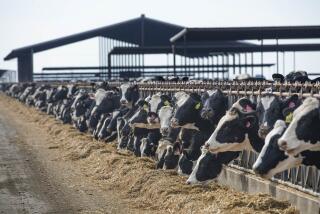Now the Real Work Starts
- Share via
Not just in California but all over the United States everybody seems to be getting into the clean-air act. A good thing, too, because the fight for pure air has reached the point where everybody--not just a few big polluters--needs to be in the act.
Southern California’s crusade for clean air, for example, has seldom featured a cast of more than dozens, largely because it is very human to save the hard part of a job for last. Under the region’s new 20-year clean-air plan, reducing pollution begins to involve a cast of millions because the easy part of sweeping away smog is over.
Over the years, a succession of smog-control agencies has concentrated on imposing controls on the big targets--power plants, refineries, automobile manufacturers, smelters and the like. It was just good arithmetic to concentrate on operations that would yield tons of improvement rather than going after bakeries, dry cleaners and solo commuters, where the yield would be measured by the ounce.
The new plan for Los Angeles, Orange, San Bernardino and Riverside counties changes that. Controls on power plants and other major polluters will get tighter over the years, but clean air no longer is somebody else’s business. Starting this year, it must get, and keep, everybody’s attention.
There is a lot going on in the clean-air campaign these days. President Bush has led the White House back into the environmental movement after an 8-year holiday under former President Reagan. The governors of eight Northeastern states, including New York, have launched a campaign to raise their automobile pollution standards to the levels set by California, the pacesetter. Recent polls show overwhelming support for ending pollution as a threat to health.
Those are all good signs, but they do not mean that the leaders of the nation’s anti-smog efforts can coast from here on; as we hear the leaders in charge of Southern California’s campaign against pollution, they understand that, polls or not, the really hard work lies ahead.
Last week’s unanimous endorsement by the state Air Resources Board of the long-range plan for the campaign was welcome, but it also was just the starting whistle for the heavy lifting. Now comes detailed planning for changes in such basic customs as the way Southern Californians commute, allocate land to different uses, decide where to build housing and where to locate jobs. Then will come the delicate business of coordinating with the dozens of cities and four counties to make the plans work, which will be followed by drafting and analysis of more than 100 regulations to clamp down tighter on small sources of pollution. All of which will be done in the din of conflicting arguments about whether new rules are too harsh or let too much pollution escape into the air.
In making the plan work, the leaders of the chief agencies involved in the clean-air campaign, the South Coast Air Quality Management District and the Southern California Assn. of Governments will be obliged to play a number of tough roles. They must be militant regulators, loud cheerleaders, sound planners and, above all, effective educators.
As we were reminded the other day, the first generation of smog specialists spent most of its time in makeshift laboratories figuring out what smog was. Now everybody knows, and the second generation of specialists can concentrate on talking to business and to the public at large about what should be done next and why it is crucial both to health and to Southern California’s economic future. A lot will be riding on how well this new generation performs as teachers.
More to Read
Get the L.A. Times Politics newsletter
Deeply reported insights into legislation, politics and policy from Sacramento, Washington and beyond. In your inbox twice per week.
You may occasionally receive promotional content from the Los Angeles Times.










